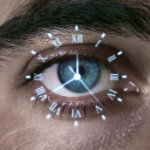Cataracts & UV Exposure from Driving
In a recent study published in JAMA Ophthalmology, researchers assessed the levels of UV-A light that seeped through the front windshield and driver-side window of several automobiles.
The lead researcher in the experiment was Brian Boxer Wachler, M.D., of Beverly Hills, California. Using a handheld UV-A light meter on a cloudless Southern California afternoon, he measured the amount of radiation behind the front windshield and the driver-side window of 29 automobiles, spanning 15 different manufacturers and ranging from almost new to 26 years old. The protection afforded by windshields was consistent and formidable, blocking an average of 96 percent of UV-A radiation. Driver-side windows blocked much less UV-A light and varied widely from model to model. Only four driver-side windows of the 29 cars tested blocked more than 90 percent of the radiation.
“UV radiation from the sun is associated with 90% of skin cancers and is linked to cataract formation. The adverse effects of UV radiation while driving have been previously reported. Previous publications have documented increased prevalence of left-sided cortical cataracts and skin cancers because of asymmetrical UV exposure when the driver is situated on the left side of the automobile. A US study of 898 patients with skin cancer demonstrated that a left-sided skin cancer was more common in those who spent more time driving because the driver’s seat is on the left side of most automobiles in the United States. Conversely, a reduction of UV exposure has beneficial effects, with one study reporting a 93% reduction in cell death in the skin when UV exposure was filtered through UV-absorbing auto glass.”
Jayne S. Weiss, MD
JAMA Ophthalmol. 2016; 134(7):776-777. doi:10.1001/jamaophthalmol.2015.5101.
“It’s common knowledge that UV rays are responsible for the development of skin cancer, but what a lot of people don’t realize is UV rays can actually increase your risk of developing cataracts and other vision problems,” stated Allen Zieker, M.D., President of Ophthalmic Consultants of the Capital Region.
In fact, in the United States cataracts and skin cancers appear on the left side of the face more often than on the right. The opposite is true in countries that drive on the other side of the road. Eye doctors have long suspected that sun exposure through the driver-side window contributes to the accumulated ultraviolet (UV) radiation exposure that exacerbates the formation of cataracts and certain skin cancers.
Protecting Your Eyes from UV Rays While Driving
To lower your risk of developing cataracts from the harmful UV rays when driving, here are some safety measures you can take.
- Wear Sunglasses
You should always wear sunglasses when you’re driving or outside, even if it’s a cloudy, rainy day. UV rays can penetrate through clouds and can still cause harm to your eyes. Not all sunglasses are created equally. Make sure the sunglasses you wear offer protection from both UV-A and UV-B rays. You should also choose sunglasses that wrap around and offer protection from the sides as well.
- Wear a Hat
Wear a hat with a large brim on it to give your eyes added protection from the sun. The hat will also help shield your skin from the sun’s harmful rays.
- Comprehensive Annual Eye Exam
Visiting Ophthalmic Consultants of the Capital Region every year for a comprehensive eye exam is a good way to detect eye disease early and help improve the chances of preserving your vision. Many eye diseases caused by harmful UV rays don’t have detectable symptoms in the early stages.
Experienced Eye Doctors
Ophthalmic Consultants of the Capital Region offers a comprehensive model of care with experienced specialists, ophthalmologists, optometrists, and opticians who provide patient-centered eye care to the Albany, Clifton Park,Schenectady, Schodack, and Troy, New York areas.
Our dedicated ophthalmologists and optometrists are committed to your vision and eye care, which includes a complete range of services from providing comprehensive eye exams,
screenings and treatment for glaucoma, cataractand retinal surgery, and refractive surgeries such as LASIK and PRK.
Our impressive staff of ophthalmologists and optometrists includes fellowship-trained specialists, researchers, and educators with a combined experience of more than 200 years and more than 75,000 surgical procedures. Our eye doctors’ extensive experience and their commitment to your vision and eye care directly translates into providing patients with advanced treatment and compassionate care.


